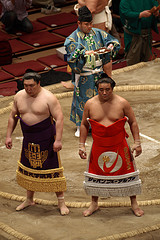
I am sure we all know about karate – perhaps thanks to the Karate Kid series of movies. We know about aikido – thanks to Steven Segal. We know a lot of Eastern martial arts. Yet have you ever heard of koryu?
Koryu is the Japanese word used to refer to the ancient Japanese martial arts. Trust me, this is the real thing! Basically, if you translate koryu to English, you will get “old school”. Now that sounds tough, doesn’t it?Koryu typically refers to the Japanese martial arts schools that focus on the techniques that existed way before the Meiji Restoration. That is, before the year 1866. As you can see, koryu is a very old Japanese tradition.
This term actually covers a lot of ground and even encompasses some of the better known schools of martial arts today. This includes judo and aikido. However, the latter two are modern day versions of koryu. More so, koryu includes both armed and unarmed fighting techniques.
To give you a more comprehensive background on koryu:
Although systematic training in the use of weapons, and methods for employing them in warfare existed long before, it is generally believed that the development of martial traditions, schools, or styles (ryu-ha) did not arise until after the end of the Heian period (794-1185). Central to this training was study of the bow (yumi), the sword (tachi), and the spear (yari). Initially, these weapons were not studied in separate arts. Rather, since the need was to prepare for battlefield combat, many different weapons and strategic and tactical skills were taught as part of comprehensive systems (sogo bujutsu).
From the middle of the Muromachi period (ca. 1480) to the beginning of the Tokugawa period (ca. 1605) people gradually began to specialize in a particular weapon or system, particularly the bow, spear, sword, grappling and horsemanship. Warriors gathered in family-centered groups or trained with other members of their local domains. As the techniques and methods of these groups became more and more individuated, or as teachers gained particular insights into the essential nature and principles of combat, there arose discrete martial “traditions” or “styles” or “schools” (bujutsu ryu-ha). This began happening at the beginning of the Keicho era (ca. 1600), picked up impetus throughout the Tokugawa period (1600-1868), and has continued even into the twentieth century.
By:
Prosper Co.,Ltd
Japanese used car dealer
For Assistance
Contact
HIRO
+81-5055-32-8180